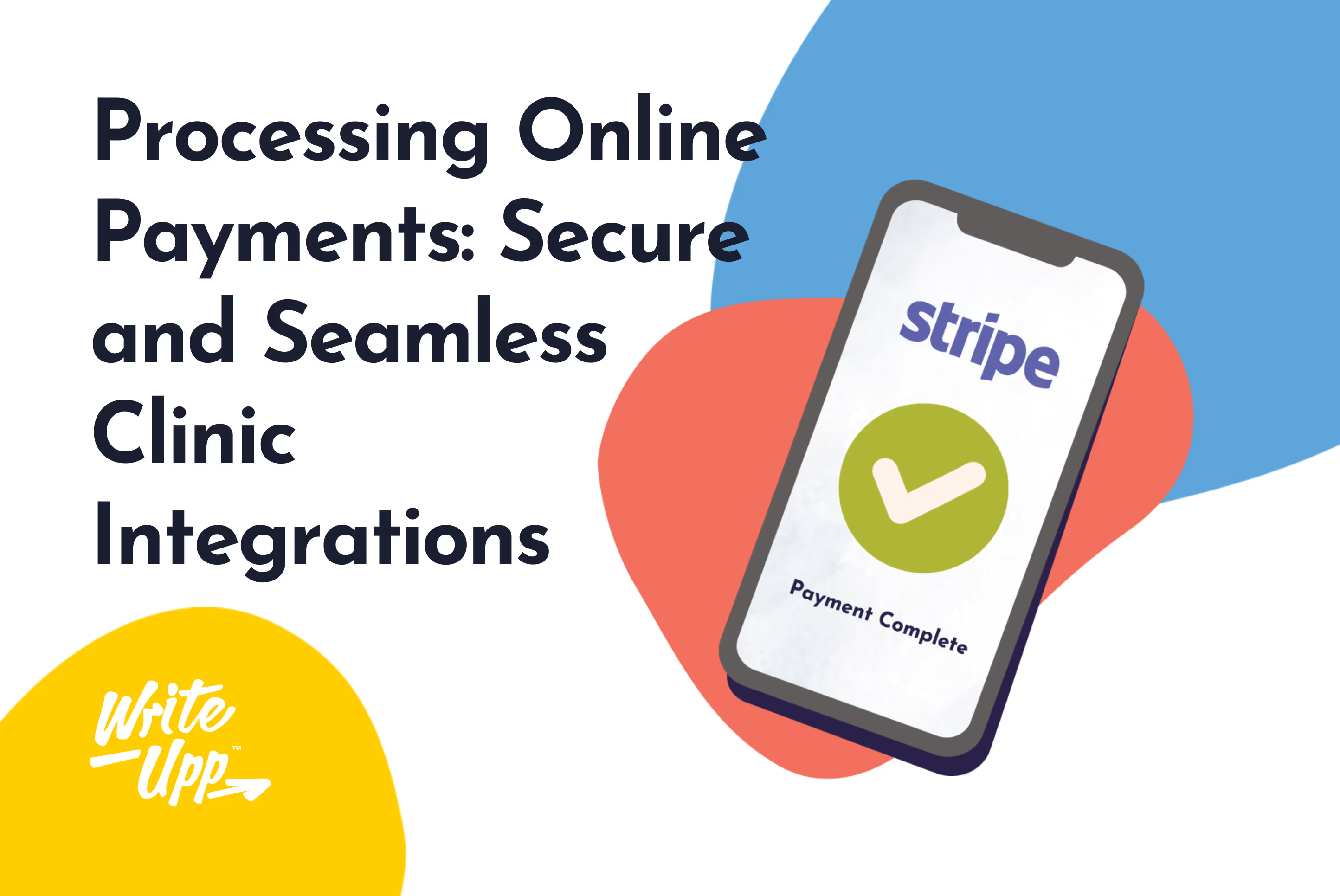Email marketing is communicating with your current or prospective clients through email. With the ever-growing amount of online marketing that internet users face every day, effective email marketing can be incredibly helpful to cut through the noise and speak directly to your audience.
In this article, we’ll cover everything you need to know to create and execute an email marketing strategy that will have your audience looking forward to seeing your messages in their inbox.
TLDR? Watch the video instead:
https://youtu.be/CLNg-JQkvLU
What is Email Marketing for Private Practice?
Effective email marketing prioritises building relationships over mere promotion. Providing valuable tools and content sets you apart from the competition in your clients’ inboxes.
On our podcast The Healthy Practice, we spoke to healthcare email marketing strategist Catherine Smith on how to get it right. Check it out on YouTube here:
Healthcare Copywriting and Email Marketing: How to Get it Right
In this article, we’ll be taking a deep dive into email marketing’s benefits for your therapy practice, including:
- Building authentic relationships
- Guiding prospects along the client journey
- Promoting content and services
- Enhancing client experience and communication.
Why Should I Use an Email Marketing Service Like Mailchimp?
Nowadays, spamming through various channels — social media, phone, SMS, or email — is heavily regulated, with ongoing efforts to reduce unwanted messages. Some countries, like Denmark, have made it illegal, while others have established codes of conduct. Tech giants like Google have implemented aggressive spam filtering in products like Gmail to aid users in managing their inbox clutter.
Mailchimp offers a structured and controlled approach to email marketing, allowing you to:
- Build and manage recipient lists.
- Provide necessary information about the email source and purpose.
- Facilitate unsubscribing and reporting spam.
- Prevent accidental emailing of unsubscribed recipients.
- Remove duplicate entries from lists.
- Gather valuable analytics on reader engagement, demographics, and technology usage.
- Create branded email templates for consistency.
- Test emails across various devices, including mobile.
Mailchimp has honed its product over the years to align with global legislation and best practices. At WriteUpp, we integrate with their software rather than attempting to offer a marketing module that risks emails being flagged as spam or domain blacklisting.
Best of all, these features are free in Mailchimp for lists of fewer than 1,000 recipients.
How to Create an Email Marketing Strategy for Your Private Practice
The foundation of any successful marketing effort always lies in knowing exactly what you want to achieve. Who do you want to reach, and how do you want to communicate with them?
By setting a clear email marketing strategy for your practice, you’ll be able to assess whether email marketing will help you achieve your overall objectives.
Step 1: Define your email audience(s)
The key decision lies in defining your email list's audience. The more relevant your emails, the more effective they become. Narrowing down your audience through segmentation allows for tailored, specific content. Start with one audience to test the waters, then consider defining client personas to refine your segments further.
You might consider the following options:
- Lists for prospective clients, current clients, past clients
- Lists for different audience demographics (age groups, locations, language, etc.)
- Lists for different client groups, client concerns and/or different treatment options
Step 2: Set your email campaign type(s)
After you’ve defined who you will send emails to, it’s time to look at what you will send them. You could decide to send various types of email campaigns, and which are relevant will highly depend on the needs and interests of the audience groups you defined in Step 1.
Some ideas you might consider:
- A weekly/biweekly/monthly industry newsletter
- New content announcement emails (blog, social media, etc.)
- An automated welcome series to familiarise new email subscribers with your practice
- Updates on anything related to your practice and services
- Information about events and workshops you’re hosting or participating in
- Promotional deals regarding your services and/or products
These different campaign types don’t have to be mutually exclusive either. For example, if you’ve decided to segment your audience into prospective and existing clients, you might want to separate your email campaigns as follows:
All email recipients:
- Monthly industry-related newsletter
- Announcements about new content on your website or social media
Only prospective clients:
- Automated welcome series to familiarise with practice and services
- Information about services and promotional deals
Only current clients:
- Updates on anything going on in your practice
- Invitations to additional services, events, workshops, etc.
Step 3: Choose your email marketing provider
Implementing a more sophisticated email marketing strategy with different audience groups and campaign types requires using a professional email marketing tool like Mailchimp, which integrates directly with WriteUpp.
With Mailchimp and WriteUpp, you can:
- Design and personalise your emails to make them look more professional
- Easily create different email segments and send different email campaigns to each group
- Set up an email series that will automatically be sent out as soon as someone signs up for your email list
- Make sure your emails comply with necessary privacy regulations (more on this in the next chapter)
- Every email and campaign will show analytics and performance (open rates, clicks, etc.)
Step 4: Define what success looks like to you
Define success early in your marketing strategy to gauge effectiveness. For simplicity, focus on consistency and growing a quality email list.
Alternatively, if you enjoy metrics, set goals based on new subscribers, open rates, click-through rates, etc. Research industry averages to inform your benchmarks.
How to Set the Legal Foundation for Email Marketing
You’ve created a solid email marketing strategy for your private practice. Great! But before you start growing your email list and sending out emails, it’s important to cover all the legal requirements you’ll need to consider so that you follow all privacy and safety regulations.
GDPR Compliance
Ensure GDPR compliance across all data collection in your practice, including email marketing, to avoid legal repercussions. Key practices for email marketing include:
- Obtain consent before sending emails to new contacts.
- Clearly outline the type of emails recipients can expect.
- Securely store and utilise data only for agreed purposes.
- Provide easy unsubscribe options and honour requests promptly.
- Delete stored data upon request.
Professional email marketing tools like Mailchimp streamline GDPR compliance by offering features like compliant sign-up forms and automated confirmation emails.
Avoiding the Spam Filter
When it comes to avoiding the spam folder, there are a few simple things you can do to avoid it:
- Always send emails through a reputable email marketing provider
- Only send emails to recipients who have opted-in to your email list
- Ask new subscribers to add your email address to their address book
- Make sure your “From” field says something credible and trustworthy
- Never write anything spammy or misleading in your subject line (including weird punctuation, capitalisation, fake or misleading offers)
- Avoid including too many images in the email, as it makes them hard to read
- Don’t include any links to questionable or illegitimate websites
- Set up proper authentication for your domain (this requires some technical expertise)
- Make it as easy as possible for people to unsubscribe (always include it in the footer)
- Keep your email list up-to-date by removing any subscribers who don’t engage
Unsure if your emails are landing in the spam folder? Mailchimp offers a feature that lets you send a test email before officially launching an email campaign. I recommend sending one to yourself or someone you know so you can see whether or not it arrives in your regular inbox.
How to Build Your Private Practice Email List
Now that we’ve established a solid strategy and you’ve sorted out the legal stuff, let’s examine the nitty gritty. How do you build a list of people who actually want to read what you’re sending out?

Source: MailChimp
Growing your email list is a gradual journey, not a quick sprint. Whether you start with 3 or 300,000 subscribers, what counts is knowing your audience and your message. With patience and persistence, you'll reach your goals over time.
Collect Emails When Someone Books or Attends an Appointment
To build an email list of your current clients, simply ask them if they'd like to receive your emails. In appointment confirmations/reminders from WriteUpp or other practice management software, include a link to your sign-up form. Remember to obtain explicit permission for marketing emails, respecting the distinction between administrative and marketing purposes.
Create Enticing Sign-Up Forms
To grow your email list with prospective clients, create sign-up forms on your website through your email marketing provider. These forms can be placed on the homepage, blog, and contact page, or as pop-ups anywhere on your site.
Keep forms simple and relevant, usually requesting only first name and email address. Ensure transparency about the content recipients can expect and offer genuine value to encourage sign-ups. Consider using "lead magnets" to incentivise sign-ups.
Use Lead Magnets
The concept of a lead magnet is simple: offer something valuable to your audience in exchange for their email address. Instead of simply asking for contact information, focus on providing free value to showcase your expertise.
Consider relevant, helpful, and actionable content that your audience would appreciate, such as eBooks, white papers, infographics, webinars, video or email courses, online tools and templates, access to a Facebook group, or anything else you can think of.
Leverage Social Media or Other Audiences You’ve Built
Lastly, suppose you currently have followers on Facebook, LinkedIn, Twitter, or any other platform. Chances are those followers enjoy hearing from you and might consider signing up for your email list as well.
You can periodically share some of the content via email and invite followers to join via your sign-up page. Or simply add the sign-up page to your profile for people to find when they are interested.
How to Create a Great Marketing Email
You’ve figured out your email strategy and have a growing list waiting for you to get started—so how do you actually go about writing an effective email?
Deliver Valuable Information
To make your marketing emails stand out, focus on providing valuable, actionable content instead of just selling. Ask yourself if you could charge for the information you're sharing - aim for a "yes" most of the time. By consistently sending valuable emails, you build trust and position yourself as an expert. When your audience needs your services, you'll be their top choice.
Be Authentic, Genuine and Personal
Don't feel pressured to adopt a formal tone in your marketing emails. Authenticity resonates more in today's saturated market. Write like you're addressing a friend, showing genuine care for your subscribers.
Enhance personalisation by addressing recipients by name, incorporating relevant demographic details, and sharing personal anecdotes when appropriate. Sign off with your name, not just your company's.
How to Measure Your Email Performance
Whether you choose to set performance goals and track analytics is entirely up to you. While some find data gathering insightful and motivating, others may find it less appealing. Regardless, focus on creating high-quality emails to build lasting relationships with your clients. If you decide to track results, here are the key metrics to monitor:
- Deliverability: Rate of emails successfully delivered to subscribers' inboxes.
- Open Rate: Percentage of recipients who open your email.
- Clickthrough Rate: Percentage of recipients who click on a link in your email.
- Unsubscribes: Number of recipients who opt out of your email list.
Mailchimp offers reports on these metrics, simplifying tracking:

Source: Mailchimp
Test Different Variables Based on Your Results
Once you've established your average email performance metrics, you can experiment to improve them:
- Deliverability: Monitor for spam factors and remove undeliverable or inactive addresses.
- Open Rate: Test different subject lines and send times.
- Clickthrough Rate: Evaluate value provided, test copy and design variations.
- Unsubscribes: Assess alignment with the audience, brand consistency, and promise delivery.
A/B testing is a valuable technique for improvement:
- Select a variable to test, like emojis in subject lines.
- Create two identical emails with one variable difference.
- Send both versions to a split audience simultaneously.
- Analyze results to determine the better-performing version.
- Keep the superior version and repeat the process with a new variable.
Exercise caution not to overly prioritise metrics over value and authenticity. A/B testing requires a sizable mailing list for statistical significance, ideally over 1000 contacts.
Email Marketing Made Easy with WriteUpp
Harnessing the combined power of WriteUpp and Mailchimp revolutionises your approach to email marketing.
With WriteUpp's intuitive interface seamlessly integrated with Mailchimp's robust features, creating, managing, and analysing email campaigns becomes a breeze. Say goodbye to complexity and hello to efficiency as you streamline your email marketing efforts, reaching your audience with precision and impact.
Integrating WriteUpp and Mailchimp today will allow you to experience the ease and effectiveness firsthand. Sign up for a free 30-day trial with WriteUpp and unlock a world of powerful marketing possibilities.



Join over 50,000 clinicians that we've helped using WriteUpp
Start my free trial






